The word legend gets overused. That’s true even in the games industry, where the collaborative nature of development creates few genuine celebrities. But the word applies to John Romero, who was one of the first true rock stars of gaming.
With John Carmack, Tom Hall, Adrian Carmack and others, he defined the first-person shooter genre. Titles like Commander Keen, Wolfenstein 3-D and Doom broke technical boundaries. They saw the id Software developers become idols of the burgeoning 1990s games industry.
But Romero also has a history with mobile gaming. Following Ion Storm and the challenges of Daikatana, Romero went from being an FPS A-lister to a pioneer in handheld and mobile gaming.
Over 20 years ago, his outfit Monkeystone Games realised the future would be portable and developed early hits Hyperspace Delivery Boy! and Congo Cube, as well as the mobile port of Red Faction.
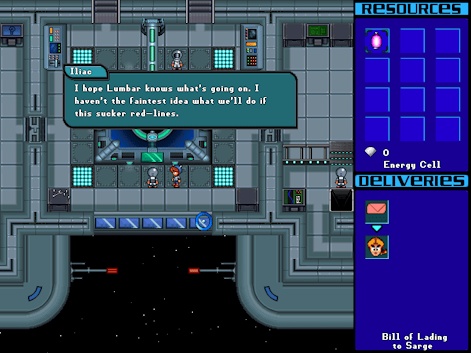
Now he’s an indie developer again, working on an as-yet-untitled Unreal 5 project. Doom celebrates its 30th anniversary this December, and Romero publishes his autobiography later this July. In a nod to his most famous creation and its protagonist, the book is called Doom Guy: Life in First Person.
PocketGamer.biz took the chance to sit down with him last week to discuss his journey, his philosophy and passions, and the technical challenges he’s overcome as a games developer.
I could see [mobile] was going to be forever. Everyone will always be playing games in their handJohn Romero
Today you can read an excerpt of his chapter on mobile gaming, too, thanks to publisher Abrams Press. The memoir, Doom Guy: Life in First Person by John Romero, published by Abrams Press, will hit shelves on Thursday, 20th July. The photo of John Romero is by Natalie Greer Studios, supplied by Abrams & Chronicle.
Documenting his early experiences
John Romero grew up in Tucson, Arizona. He’s part Mexican-American, part Yaqui and Cherokee. Before reading about his first games experiences, we’re hit with an eye-opening account of a difficult childhood, including drugs and murder, all before page 5.
“I could tell people were shocked and surprised!” he says, recalling the first time he spoke publicly of his childhood. “I was at a conference in Canada. Instead of hearing about a specific game, the organisers asked that they’d like to learn about my life and what made the person who made Doom. Afterwards, people said, ‘You should really put that in a book!’ That’s a good idea, so I just laid it all out there.”
He writes matter-of-factly about his formative experiences, his young parents living with very little, the support of his grandmother, and about domestic violence – the “poverty and alcoholic chaos”, he calls it in the book.
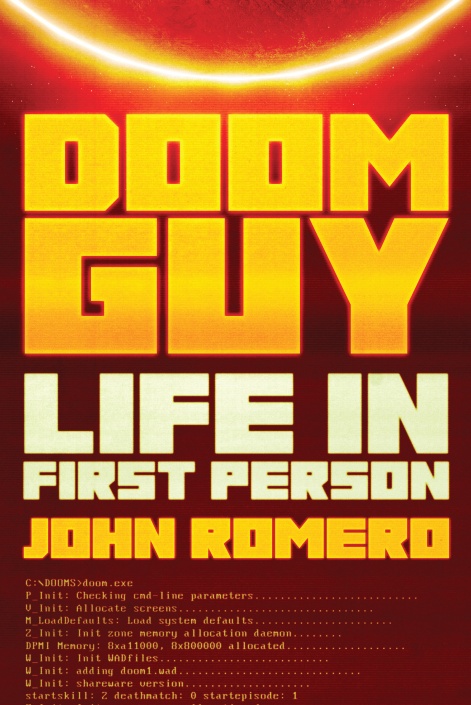
“It was definitely difficult to write about those things,” he confesses. “But writing about them not in a harsh way either was important for me. I love my family, so I didn’t want to write anything that made people think I didn’t like where I came from. But it was a difficult experience growing up. And I came through it. I hope people in a similar situation might see themselves in the book and see that they can get through it as well – I thought it’s important to put the difficult stuff in there so that people could identify with some of those stories.”
In preparing the book, Romero spent time “fact-checking” and making sure friends and family were comfortable with the stories he would tell. “People were really supportive of it. Everybody in the family knows about everything that happened,” he tells us. “I heard from people that they really appreciate me being candid about my experiences.”
Breakthrough games and worldwide acclaim
Games were a passion right from the start for the young Romero and inspired a period of voracious learning, and he landed a gig coding for the US Air Force aged 15.
A big chunk of the book is about his adult experiences working in the games industry, the programming breakthroughs of the early 1990s, turning the PC into a games machine, learning about business, and subsequent disagreements in the boardroom.
What was the atmosphere like in the early days? Even before Doom, John Carmack, Tom Hall, and John Romero were getting noticed. “People were aware of us after Wolfenstein – and Commander Keen!” he recalls fondly. “The people who reviewed the Commander Keen games were just, ‘Mind blown!’. They appreciated the hard technical work we did to make it possible for a PC to be like a Nintendo.”
So much so that the team felt confident in hyping the next project, Doom, as “the greatest game ever!” in pre-release publicity. It sounds arrogant, but it was more than just youthful bravado – they’d had eureka moments in the office and released they were breaking new ground.
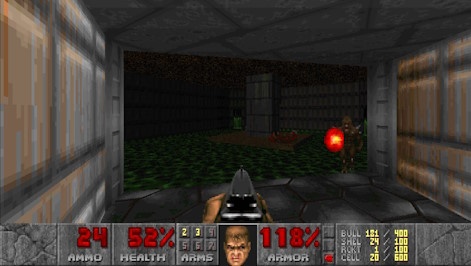
Carmack enabled smooth side-scrolling in a test they jokingly called Dangerous Dave In ‘Copyright Infringement’, followed by 3D environments running in software (no GPUs back then) and other pioneering techniques that would later come to dominate the games scene: PvP multiplayer; game engines that could be re-used and licensed; in-game recordings for speedrunners to share their videos; easy modding tools for fans to build their own levels. The list goes on, and many of these staples began 30 years ago on the desktops of id Software. Romero is even credited with inventing the term deathmatch.
“Carmack was definitely the most exceptional programmer I’ve ever known,” Romero tells us. “We knew that technology jump was massive, to go to full 3D. It was huge. It’s stuff that graphics cards now do! He was doing that in software at 60 frames a second, which is difficult. And multiplayer, too – just incredible. Nowadays, if you make a game, you need to know at the start if it will be multiplayer or else forget it. But we remembered [Doom] needed to be multiplayer a couple of months before we released it! So we had to figure it out and get it done immediately.”
Public perception and Doom's impact
They received the recognition they deserved for these technical achievements: Doom made them superstars with rave reviews in all the magazines. And it also changed their fortunes. The book describes “a collective car-buying binge” as they awarded themselves $110,000 bonuses so Romero and Carmack could buy Ferraris. Romero also bought his father a house.
The success and celebrity also made id Software a target for campaigners complaining about violence in games. There’s a short chapter in Doom Guy: Life in First Person about how Doom became “an unwitting scapegoat” in the media after the Columbine shooting.
Just as PocketGamer.biz is about to speak with Romero in July 2023, French president Emmanuel Macron blames video games for the rioting in France. Is this a conversation that’s ever going to go away? “I don’t know if it will ever go away. Not everyone is informed about the studies that have been done regarding video game violence and the games themselves,” sighs Romero. “They haven’t read up on it. They just take a quick, hot take. Anytime there’s a new technology, there’s going to be something. Comics, heavy metal, and Dungeons & Dragons: everything has been blamed. Anything people don’t understand.”
On Quake and the break with id Software
After the highs of Doom, the autobiography makes it clear follow-up Quake was troubled, with the level of ambition way too high for the amount of time they gave themselves to make it.
The truth is that we were in our 20s; lots of crazy stuff happens in your 20s! You don’t think there are any limits either, so you just do itJohn Romero
They had to tone down their long-held ambitions for a fantasy adventure in which Quake was a superbeing with a Hammer of Thunderbolts. It became a familiar first-person shooter.
id Software had a mantra of “it’s done when it’s done”, but the original plan was overwhelming, and the team grew restless with the process. There was conflict within the team about how much time was spent on other projects – John Romero was also working with Raven Software to produce games like Heretic and Hexen using the Doom engine – and Quake’s “vision changed rather dramatically” after what Romero describes as a “rebellion… in full effect”. The team voted to redesign their sprawling medieval prototype and make Quake a familiar shooter. It took a crunch period of 84-hour weeks to get it done.
Romero’s book covers all this in a straightforward, non-accusatory way, for the most part. “It’s not setting any record straight,” he insists when we ask about his motivations. “This is basically telling my story from my viewpoint and what happened – because I was actually there. And telling it as it happened, which I thought was important to make it feel contemporaneous. What was said, some of the discussions I had during Quake’s development, everything. A lot of times over the years, people focus on those conflicts. The conflict and controversy make for great stories. But there really wasn’t a lot: we worked exceptionally well together. There’s no way we could have made those games that fast if we didn’t work perfectly together.”
Daikatana and a new direction
The friends look back now with a degree of wisdom and experience. “I’ve talked to Carmack about that time since, and we agree that we could have done things completely differently,” reveals Romero when we chat. “We both know that we could have totally developed Quake (or another game in between) differently to make the team feel productive and not burned out. We could have taken Quake’s technological leap and broken it into smaller pieces that we could get out in multiple games. But the truth is that we were in our 20s; lots of crazy stuff happens in your 20s! You don’t think there are any limits either, so you just do it.”
Quake was a success, especially for multiplayer gamers, where it was the game of choice for the LAN party scene. But it was “tense”, and Romero resolved to leave.
He set up Ion Storm (originally called Dream Design) with Tom Hall, Todd Porter and Jerry O’Flaherty. The celebrity status of the team led to them being courted by Activision and offered a big publishing deal by Eidos.
The biggest challenge was that I wanted to make the very first Bluetooth deathmatch on a mobile platform!John Romero
The company produced Deus Ex to critical success, launching a franchise that Eidos still develops. But it also made Daikatana, which saw early promotion with a now-infamous vulgar advert. The ad wasn't Romero's idea and was something he was uneasy with. The hype from that did the team no favours with gamers or the industry. Daikatana arrived three years late after production problems, including porting it from the Quake engine to the Quake II engine very late in its development, and fans felt betrayed.
So much has been written about the tumultuous fortunes of Ion Storm over the years that Romero prefaces his chapter about this period with a special welcome message in which he wholly owns “the trainwreck”. “Daikatana and Ion Storm are cautionary tales of a game that still somehow made it out the door and of a company that could not survive its many challenges,” writes Romero. The company closed in 2001.
The early promise of mobile gaming
After that experience, all Romero wanted to do was get back into programming. As you can read in the extract from Doom Guy on PocketGamer.biz, he found peace and inspiration in mobile gaming. The day after Ion Storm wound up, Romero established Monkeystone Games with Tom Hall and Stevie Case, to start coding again, with the nascent mobile and handheld market in mind. This was in 2001, long before Apple ignited the App Store revolution. Was it hard for Monkeystone to convince people mobile would be big?
“I didn’t need to convince people, really,” Romero tells us. “I was talking to believers already. It was obvious: ‘Look at this game; it’s in your hand; everyone’s gonna do this!’ I could see this was going to be forever. Everyone will always be playing games in their hand. Everyone understood. They got it immediately.”
Before the modern smartphone came along, and even before the Nokia N-Gage, much of Monkeystone’s early work was on handheld PCs. “Those Pocket PCs were proto-iPhones, you know?” he muses. “They had the functionality. They just weren’t in the right package, the right operating system. All of the different platforms, the different screen resolutions? It was definitely a Wild West!”
And that meant Romero and team had to overcome some technical challenges for Monkeystone’s first title, a Zelda-style adventure game called Hyperspace Delivery Boy!.

“At that time, I’d not been programming for five years,” he tells us. “I was basically running my team at Ion Storm and directing everybody. The last time I had coded was at the end of 1995, on Quake levels, and that was in Objective-C. Quake was a C game; it wasn’t C++. We stayed away from C++ at that time. But for editing tools, we’d use Objective-C, which was part of the NeXTSTEP operating system.”
id Software developed Doom and Quake on NeXTSTEP, the operating system on NeXT computers, founded by Steve Jobs. NeXTSTEP was also the platform on which Tim Berners-Lee developed the first web server. The spiritual descendants of NeXTSTEP are today’s macOS and iOS operating systems, and in time Objective-C would become the standard programming language supported and promoted by Apple for applications.
But early handheld, mobile and pocket PC systems were far more likely to need C++ skills, so Romero had to teach himself that.
“I had to learn that language, I had to learn the Win32 API, so I could write tools for Tom Hall to make the levels for the game,” says Romero. “He was the designer of Hyperspace Delivery Boy! and whatever he needed to make a level, I needed to write the tool for that. I also needed to learn how to program in DirectX. It was a lot of learning and writing tech, and we started in August 2001. And the game shipped in December!” Romero laughs: “Wow. Four and a half months of learning, writing, building, testing, and then launching.”
The old versions [of Doom] being released to the world was one of the most important things we could have done – to allow people to take that code and make it so it’s still working perfectly todayJohn Romero
It’s clear that this was an intense process but an enjoyable one, unlike the interpersonal and business pressures of Ion Storm. For a former video game rock star, Romero considers technical problem-solving his happy place.
And he maintains a fondness for the collaborative, knowledge-sharing nature of the games industry: “If I needed to learn a program, I just asked somebody. The internet was still pretty early, but you could ask around, and they’d be like, ‘You need Charles Petzold’s programming book.’ So I’d get that. If there was a DirectX issue, I could contact André LaMothe, who was a programming guru. Charlie Wallace was a mobile development expert. I could just contact him for anything about any platform back then – any phone, any weirdness.”
From Pocket PCs to the N-Gage
So what was Hyperspace Delivery Boy! like to play? It’s a far cry from the FPS mayhem of Doom, Quake and Daikatana.
“Our plan was to go back to the 1980s!” reminisces John Romero, of the top-down adventure game. “Tom always tends toward sci-fi. He’s excited about the infinite number of stories that could be told. And we like things to be funny.”
Their first handheld game was based on the joke that many games require you to act like a FedEx employee, taking quest items from one place to another. “So why don’t we make a game about a character who just works for a delivery company? And you’re doing ‘FedEx quests’ on purpose, solving puzzles in the meantime, and having funny dialogues and stories. It was a really, really fun game. We were having a great time. I had fun building the engine for it and making sure the tech would work.”
Romero recalls that over 20 years ago, they managed to build a system that would wirelessly upload code from his PC to the phone for testing, a process that he wryly describes as “really cool and pretty slick” back then.
Being able to wirelessly do “really cool” stuff would be helpful for the Bluetooth deathmatches that Romero’s team would bring to Red Faction. Red Faction was a sci-fi shooter first published by THQ for PlayStation 2 and PC, and Monkeystone Games bagged the chance to port it to the then-cutting-edge Nokia N-Gage. The team’s experience with first-person action games would also come in handy, but this was by no means going to be an easy job.
“Red Faction, unlike all the other games, had ‘Geo-Mod’ technology,” he laughs. It was a USP of Red Faction that you could deform the terrain and shoot chunks out of the scenery. “They wanted it ported to the N-Gage. We cannot replicate Geo-Mod there. There’s not enough memory for it. There isn’t the speed required to do what’s called ‘constructive solid geometry modification’ in the engine. We’re talking about a 100 megahertz ARM chip. And people had not been doing 3D on mobile devices at all then.”
Bluetooth deathmatches
Once again, Romero found succour through a games industry contact. He made friends with Fathammer, one of the early mobile phone companies in Helsinki.
Robert J Mical, a programmer and hardware designer who contributed to the Commodore Amiga, Atari Lynx and 3DO systems, was newly arrived at Fathammer and was happy to talk about his tech solution, X-Forge. X-Forge was a speedy mobile rendering platform, which “was pretty smooth”, and Mical was able to help Romero’s team solve the appearance of the 3D levels on the small screen.
“But the biggest challenge was that I wanted to make the very first Bluetooth deathmatch on a mobile platform!” reveals Romero.
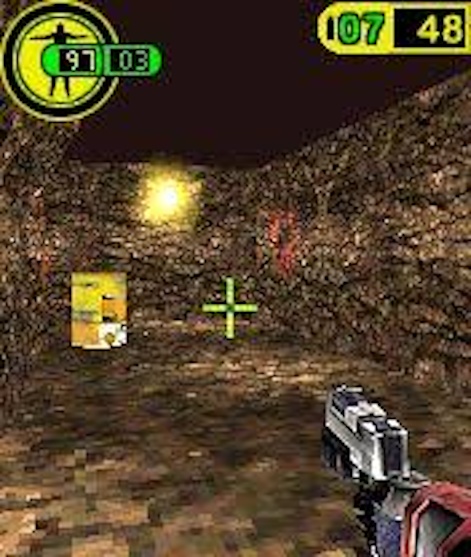
They got it working, but “the technical, physical hardware limitations of Bluetooth” would only become apparent during the testing: “Turns out you can’t have over four N-Gages in a room connected together because there’s too much interference. Data packets fly around the room; they just don’t travel to the destination. The game was working fine in our office! But when we got to do testing at THQ, it wasn’t working. And they didn’t know this either – such early days. None of us knew the Bluetooth spectrum was flooded if you had a lot of N-Gages in one place!”
Eventually, it was Romero who figured out that it was a hardware limitation, not his code. “I was like, ‘Oh my God. I can’t believe I worked so hard to try and figure this out. And it’s not even my fault!’ But I got the first deathmatch running in Bluetooth on a mobile device. Back in 2003. That was really cool.”
Casual games and the joys of puzzles
Afterwards, moving away from shooter games, the team released Congo Cube. It’s a puzzle game with match-3 elements. Monkeystone initially developed Congo Cube for Windows Mobile, then ported it to platforms including Java ME and BREW, which ran on early smartphones.
The puzzle game genre, especially match-3, is huge on modern mobiles. But back then, why the move into casual gaming?
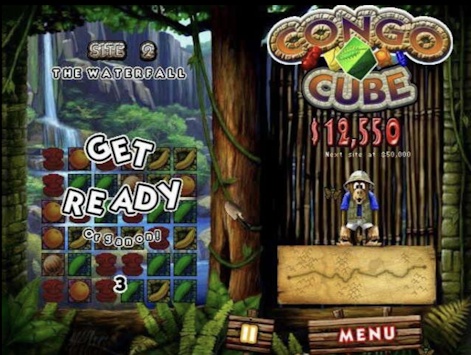
“Bejeweled was already out,” says Romero. “It was hot – a really great casual game. I thought it was awesome how you can take your time to decide what the move is going to be. I was also a super fan of Tetris Attack, a fast, arcade, match-3 version of Tetris. So I decided to do a fast action match-3 for mobile and every platform.”
At first, the prototype had “a very ‘Tetris Attack’ type interface”, but when he gave it to friends to try, “They said, ‘It’d be cooler and easier if we could just drag those blocks around anywhere.’ Awesome, that’s a really cool idea. I could do that. Within just an hour, I had it so you could drag a block around with your finger, just click and drag and do it at high speed. And that just totally changed the vibe of that game. It was just like the perfect interface.”
Doom's ongoing legacy
It’s been six years since his last mobile game, the roguelike Gunman Taco Truck, which he describes as “the greatest mobile thing that I’ve created”. But he remains a fan of the mobile games scene. “I’m still playing mobile stuff,” he reveals, name-checking RAID: Shadow Legends as “a huge, great game” he admires.
But for now, Romero Games (the indie studio founded by John and Brenda Romero) is working on a new first-person shooter based on an original IP, using Unreal Engine 5. His new project will take them back to the genre that made Romero an industry legend in the early 1990s.
Doom itself is now a multi-media phenomenon, appearing in comics, boardgames, merchandise and movies, with fresh games in the franchise, like Doom Eternal and Mighty Doom, delighting a new generation of fans. How does he feel when he sees Doom in the wild these days?
“Really great,” he beams. “It’s amazing to see that game appear in books and everything. The current owners have total control of the property, and it’s still going forward; new versions of it are still being made.”
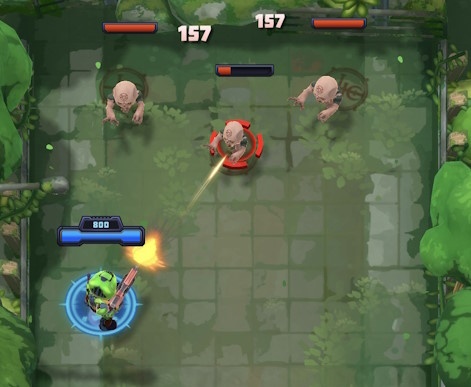
He also respects the ongoing love for the originals and the community around them, the modders, veteran fans, and the people playing it for the first time on new consoles. “The old versions being released to the world was one of the most important things we could have done – to allow people to take that code and make it so it’s still working perfectly today. You can still play the original Doom better than you ever could have! And people are making tons of content for it all the time. It’s a 30-year thing. I’ve never seen anything like this.”
Drawing the worlds of Doom and mobile technology together in a complete circle, Romero chuckles at a recent homage he saw on screen: in Matt Johnson’s recent BlackBerry biopic, of all places.
“You will not believe it,” says Romeo. “There’s a guy in the movie wearing a Doom shirt and a guy in a Wolfenstein shirt. And they’re playing Doom deathmatch in the office while they’re creating the BlackBerry! And there’s also an obscure reference to a shirt I wore in the summer after we made Wolfenstein. It’s a tank top with Cools Guys At The Beach on it. There’s a poster of the group of us where I’m wearing that shirt, and everyone else is around me. The BlackBerry movie cast recreated that same scene, and the guy in the movie is wearing that same shirt I had from 1985. He bought it from our store!”
It’s really important to lay out your exact goal. Instead of something vague, then it becomes a scoping exercise, something to work towardsJohn Romero
Advice for indie devs starting out on their journey
Finally, does the great John Romero have any advice for developers following in his footsteps? What are his tips for new indies who want to start making games?
“It’s really important to lay out your exact goal,” he says immediately, perhaps the lessons of Quake and Daikatana still in his mind. “A lot of people just want to make a game and explore their ideas. That’s great, but give yourself a goal. Say, ‘If I don’t figure this out in one month, then I will switch gears.’ Give yourself some weeks to experiment and see if the core loop feels good for the player. But solidify your goals as much as you can. Instead of something vague, then it becomes a scoping exercise, something to work towards.”
He also says: “You need to come up with a really great hook, an idea you haven’t seen in a game before. And then talk to other people who know about games to get a sense if you’re doing something unique. And if it is, prove it out; prove out that core loop and see if you can get something interesting working. Then submit that game to every indie show showcase and contest you can, to get exposure!”
Doom Guy: Life in First Person by John Romero (Abrams Press, £21.99) is out on Thursday, 20th July. Read a short extract on PocketGamer.biz.






















